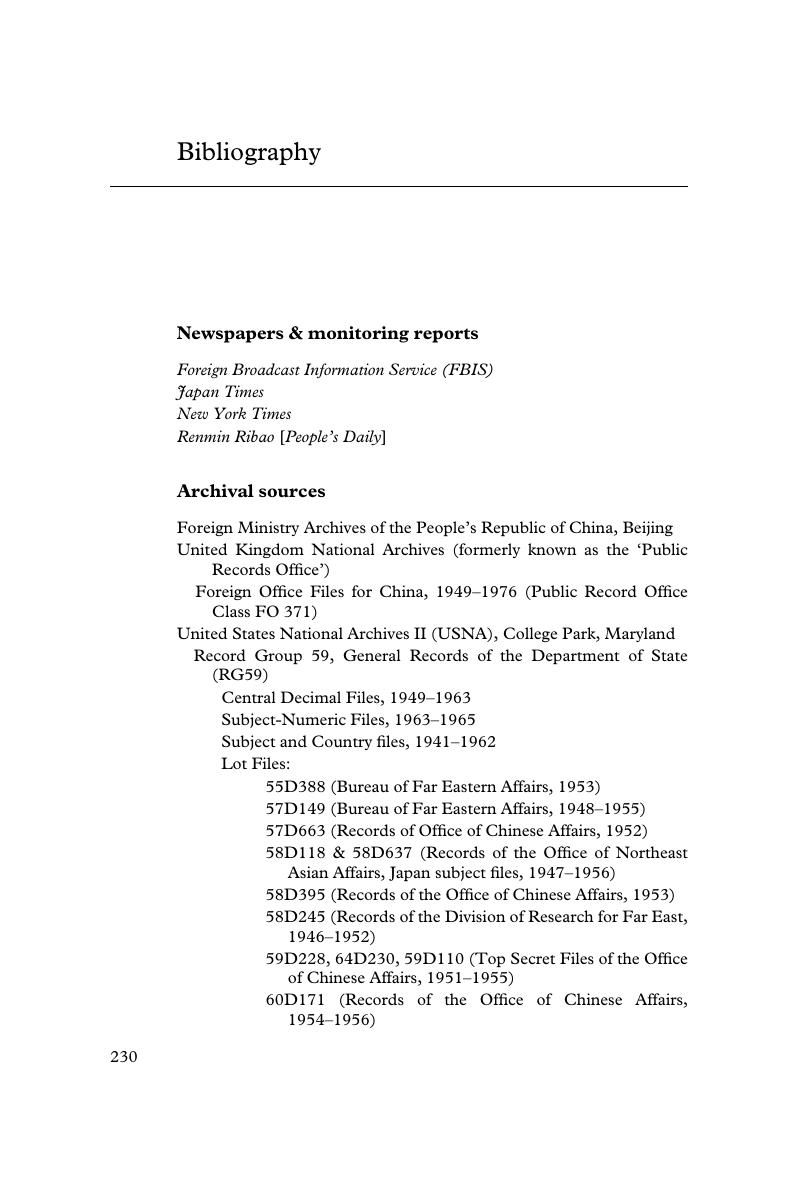Book contents
- Half title page
- Title page
- Copyright page
- Dedication
- Contents
- Contents
- Contents
- Book part
- Notes on names and terms
- Glossary
- 1 Introduction
- 2 Empire, industry and war in the China–Japan relationship
- 3 Trading with the enemy, 1949–1952
- 4 Revolution through industrialisation, 1953–1957
- 5 When ideas collide, 1958–July 1960
- 6 Comparing ourselves with Japan, August 1960–1965
- 7 Conclusion
- Book part
- Note on sources
- Bibliography
- Index
- References
Bibliography
Published online by Cambridge University Press: 05 May 2016
- Half title page
- Title page
- Copyright page
- Dedication
- Contents
- Contents
- Contents
- Book part
- Notes on names and terms
- Glossary
- 1 Introduction
- 2 Empire, industry and war in the China–Japan relationship
- 3 Trading with the enemy, 1949–1952
- 4 Revolution through industrialisation, 1953–1957
- 5 When ideas collide, 1958–July 1960
- 6 Comparing ourselves with Japan, August 1960–1965
- 7 Conclusion
- Book part
- Note on sources
- Bibliography
- Index
- References
Summary

- Type
- Chapter
- Information
- China–Japan Relations after World War TwoEmpire, Industry and War, 1949–1971, pp. 230 - 254Publisher: Cambridge University PressPrint publication year: 2016



